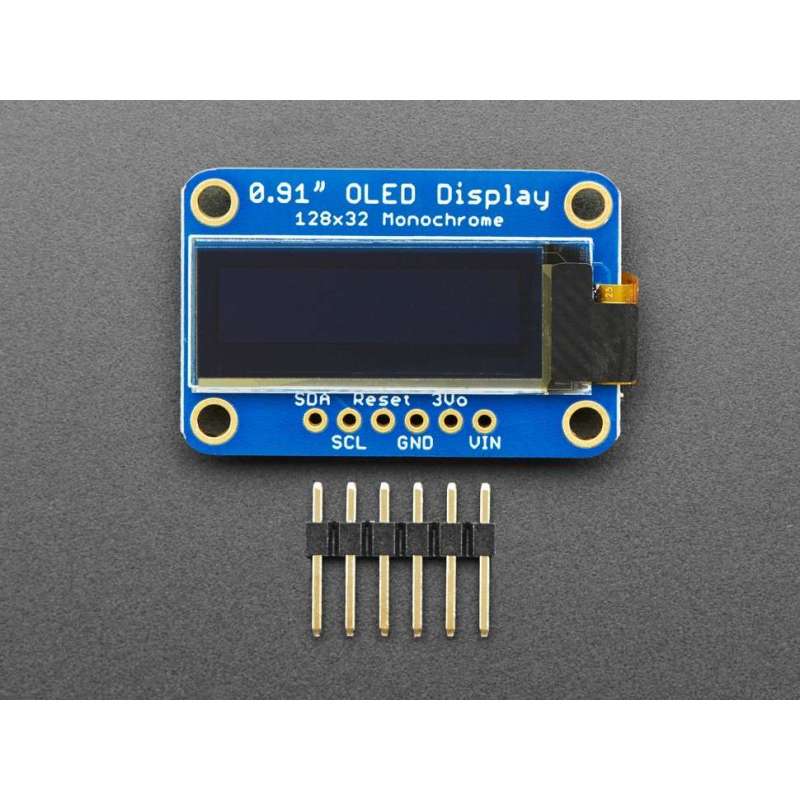



RLX COMPONENTS s.r.o. , Electronic Components Distributor.
RLX COMPONENTS s.r.o. , Electronic Components Distributor.
These displays are small, only about 1" diagonal, but very readable due to the high contrast of an OLED display. This display is made of 128x32 individual white OLED pixels, each one is turned on or off by the controller chip. Because the display makes its own light, no backlight is required. This reduces the power required to run the OLED and is why the display has such high contrast; we really like this miniature display for its crispness! To make life easier so you can focus on your important work, we've taken the OLED display and put it onto a breakout PCB along with support circuitry to let you use this little wonder with 3.3V (Feather/Raspberry Pi) or 5V (Arduino/ Metro328) logic levels. We've updated the design to add auto-reset circuitry so that the reset pin is optional, since it speaks I2C you can easily connect it up with just two wires (plus power and ground!). We've even included SparkFun qwiic compatible STEMMA QT connectors for the I2C bus so you don't even need to solder! Just wire up to your favorite micro and read through our detailed tutorial with both Arduino and Python/CircuitPython libraries for text and graphics. You'll need a microcontroller with more than 512 bytes of RAM since the display must be buffered. The power requirements depend a little on how much of the display is lit but on average the display uses about 20mA from the 3.3V supply. Built into the OLED driver is a simple switch-cap charge pump that turns 3.3v-5v into a high voltage drive for the OLEDs, making it one of the easiest ways to get an OLED into your project! Please note that OLED displays are made of hundreds of...OLEDs! That means each pixel is a little organic LED, and if it's kept on for over 1000 hours it'll start to dim. If you want to keep the display uniformly bright, please turn off the display (set the pixels off) when it isn't needed to keep them from dimming.
Datasheet, EagleCAD PCB files, and Fritzing available in the product tutorial
Dimensions:
Display details: